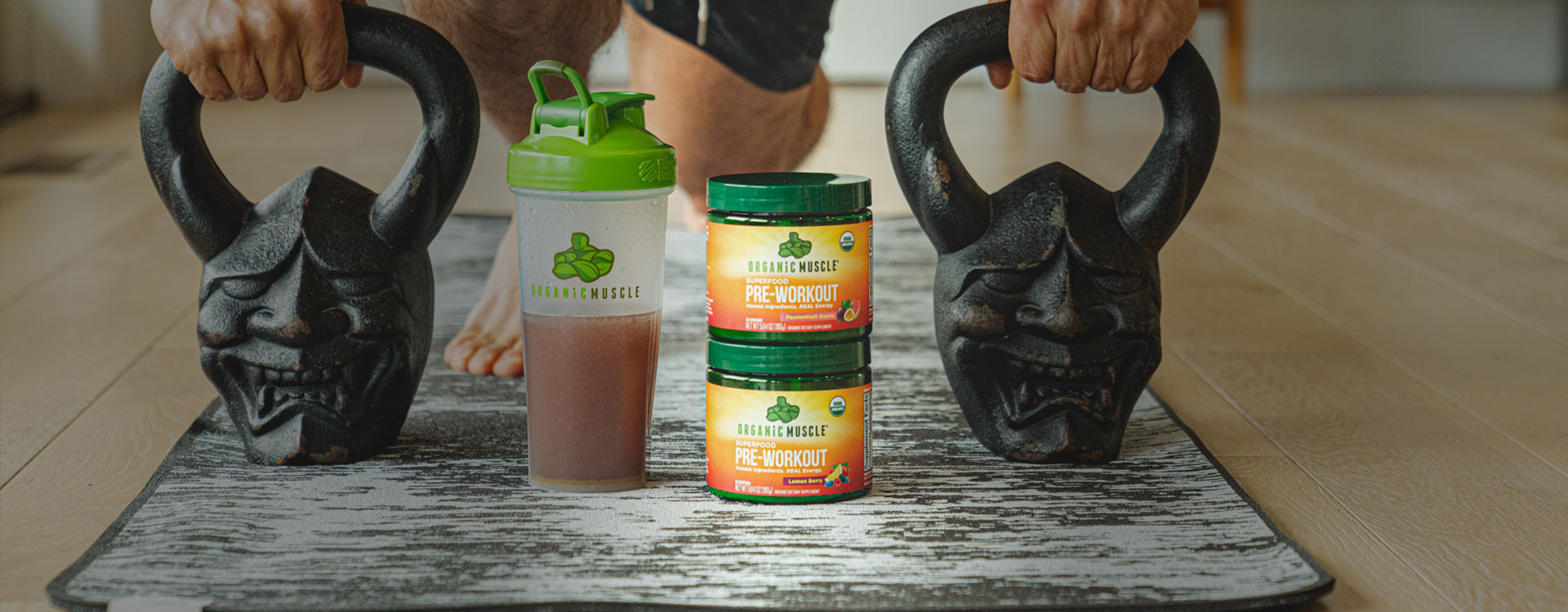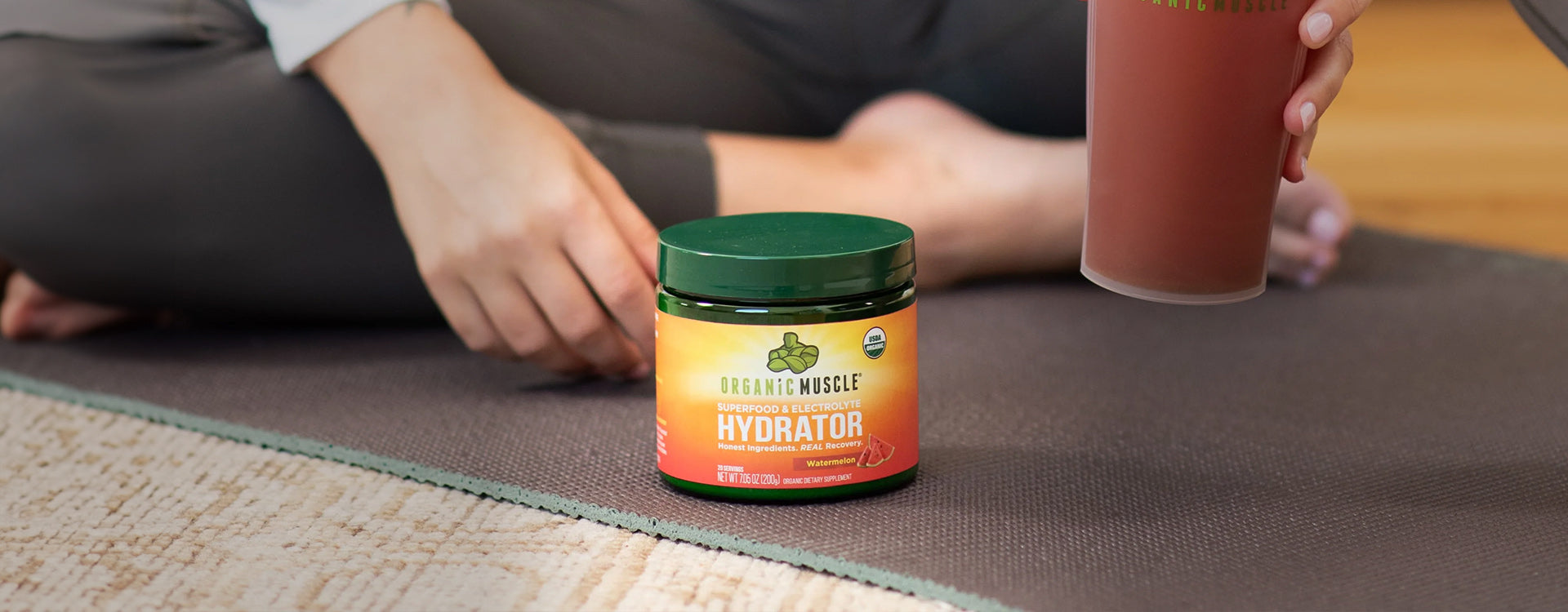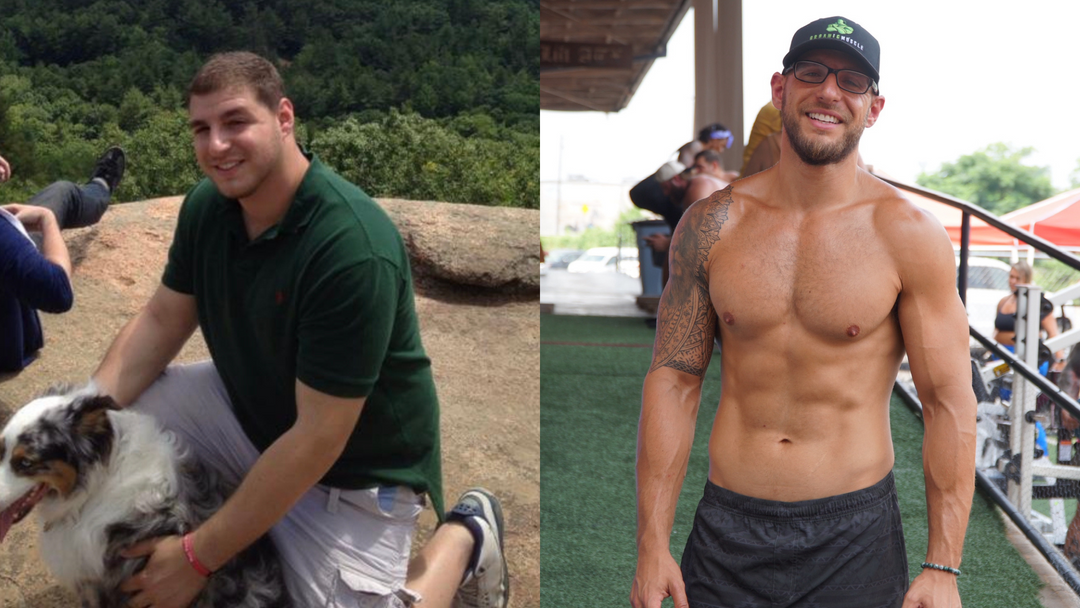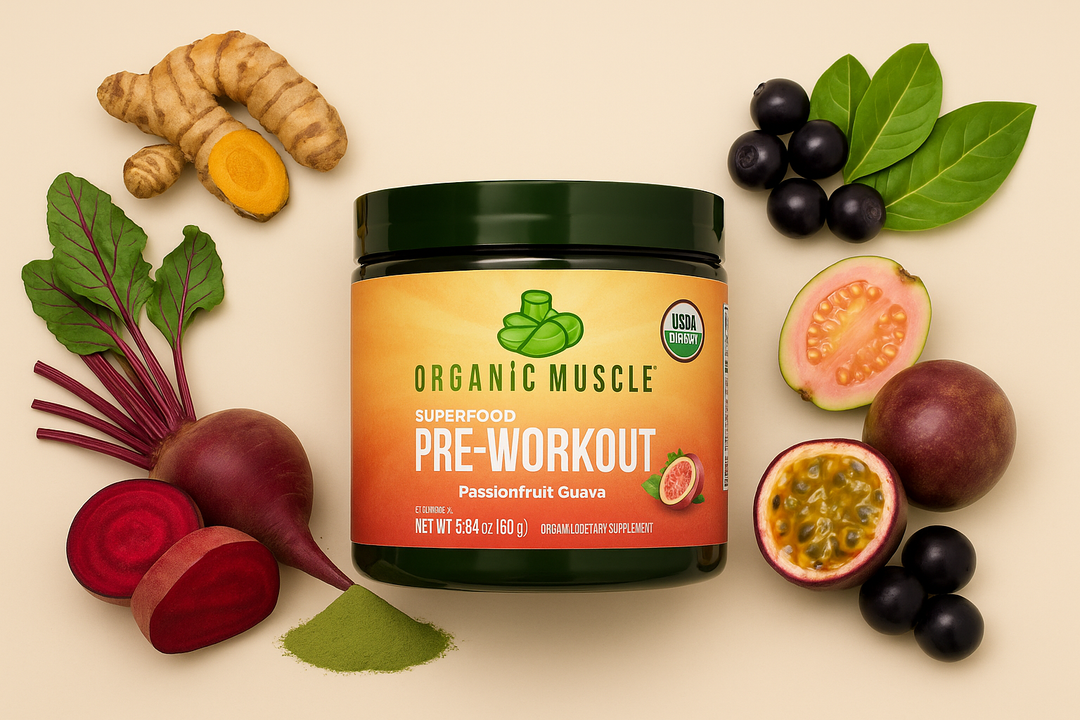Key Takeaways:
- Strength and Posture: A strong chest enhances physical performance and improves posture, reducing back stress.
- Aesthetic and Metabolic Benefits: Chest workouts contribute to a defined physique and boost metabolism, aiding weight management.
- Balance and Recovery: Incorporate varied exercises, focus on form, and prioritize rest for optimal chest growth and injury prevention.
Struggling to build that broad, powerful chest you’ve always wanted? Achieving a strong, well-defined chest isn’t just about looking good—it’s about improving your upper body strength, posture, and overall athletic performance. Whether you aim to lift heavier, enhance your physique, or boost your confidence, a well-structured chest workout is key.
Drawing from our years of experience in fitness and strength training, we’ve compiled the 10 best chest workouts to maximize muscle growth, improve strength, and give you that broader, more powerful chest. In this article, you'll learn the most effective moves, tips for proper form, and a chest workout routine to get you started. Let’s build that chest!
The Benefits Of A Well-Defined Chest For Strength And Aesthetics
A well-defined chest isn't just about aesthetics; it's a cornerstone of physical strength and health. The chest muscles, primarily comprised of the pectoralis major and minor, play pivotal roles in various upper body movements. Targeted chest workouts foster muscle growth, enhance posture, and significantly contribute to upper body strength, facilitating daily activities and athletic performance.
Enhanced Physical Performance
A strong chest contributes directly to improving physical performance. Activities that involve pushing, swinging, or throwing are significantly benefitted by the power and stability that come from well-developed chest muscles. Notably, athletes across sports—from swimmers to baseball players—rely on their chest strength for peak performance.
Improved Postural Support
The benefits of chest workouts extend beyond the gym. Strong chest muscles offer crucial support for the upper body, contributing to better posture.1 This is particularly relevant in an age when many spend prolonged periods sitting at desks, leading to slouching and back pain. Incorporating chest exercises into your routine helps realign posture and alleviate stress on the back.
Aesthetic Appeal
On the aesthetic front, a broader and well-defined chest shapes the upper body, contributing to a more formidable appearance. This visual appeal is often linked with confidence and a positive self-image. Whether the goal is to look better in clothes or to achieve a physique similar to fitness icons, chest workouts are essential.
Boost in Metabolic Rate
Chest workouts, especially those requiring significant muscle activation, like bench presses or push-ups, helps boost your metabolic rate. Muscle tissue burns more calories than fat, even at rest, meaning developing your chest muscles can help in more efficient weight loss and management.2
Holistic Health Benefits
Beyond the muscles, incorporating chest workouts into your routine has broader implications for your health. Exercise promotes increased blood circulation, improved heart health, and the release of endorphins, contributing to an overall sense of well-being.3
10 Best Chest Workouts For A Broader, Stronger Chest
Achieving a broader, stronger chest requires dedication, consistency, and a strategic approach to training. Whether a beginner or an experienced fitness enthusiast, incorporating these ten best chest workouts can significantly enhance your chest development, promoting muscular strength and functional fitness.
Expect a mix of compound and isolation exercises and tips on form and recommended reps to maximize your gains and take your chest development to the next level.
Compound Chest Exercises
Barbell Bench Press
Why it’s great: The barbell bench press is the king of chest exercises. It targets the pectoralis major (the main chest muscle), anterior deltoids, and triceps. This compound lift builds overall mass and strength in the chest.
How to do it:
- Lie flat on a bench with your feet planted on the ground.
- Grip the barbell slightly wider than shoulder-width apart.
- Lower the bar slowly to your chest, then push it back up explosively.
- Aim for 4 sets of 6-8 reps for muscle growth.
Incline Dumbbell Press
Why it’s great: This variation focuses on the upper chest, which is key to achieving a well-rounded and full look. It also engages stabilizer muscles more than a barbell.
How to do it:
- Set a bench at a 30-45 degree angle.
- Hold a dumbbell in each hand at shoulder height, palms facing forward.
- Push the weights upward until your arms are fully extended, then lower slowly.
- Aim for 4 sets of 8-10 reps.
Flat Dumbbell Press
Why it’s great: A dumbbell press on a flat bench targets the same muscles as a barbell press but with a greater range of motion and enhanced muscle activation.
How to do it:
- Lie flat on the bench with dumbbells in each hand.
- Press them upwards, ensuring your elbows are at a 90-degree angle as you lower them.
- Keep your shoulders back and chest elevated throughout the movement.
- Perform 4 sets of 8-12 reps.
Decline Barbell Press
Why it’s great: The decline position emphasizes the lower portion of the pectorals, helping to create an evenly developed chest.
How to do it:
- Set a bench at a decline angle (around 15-30 degrees).
- Grab a barbell with a shoulder-width grip.
- Lower the bar to the bottom of your chest and press back up.
- Complete 4 sets of 6-8 reps.
Chest Dips
Why it’s great: Dips are a bodyweight exercise that targets the lower chest, triceps, and shoulders. You can add weight for increased resistance.
How to do it:
- Use parallel bars with your arms fully extended.
- Lean slightly forward and lower your body until your elbows are at a 90-degree angle.
- Push yourself back up.
- Perform 4 sets of 8-12 reps.
Push-Ups
Why it’s great: Push-ups are an excellent exercise for building chest strength and endurance. By altering hand placement, they can target different areas of the chest.
How to do it:
- Get into a plank position with your hands slightly wider than shoulder-width apart.
- Lower your body until your chest nearly touches the floor, then push back up.
- Perform 4 sets of 15-20 reps.
Landmine Chest Press
Why it’s great: A landmine chest press is a unique way to target the upper chest and shoulders with a more functional, pressing movement.
How to do it:
- Set a barbell in a landmine attachment or place it securely in a corner.
- Hold the barbell with both hands at chest level.
- Press it upwards at an angle, fully extending your arms.
- Perform 4 sets of 8-10 reps.
Isolation Chest Exercises
Cable Chest Flyes
Why it’s great: This isolation exercise puts constant tension on the chest throughout the movement, effectively targeting both the inner and outer portions of the chest.
How to do it:
- Set the cable pulleys at shoulder height.
- Stand in the center, holding a handle in each hand.
- With a slight bend in your elbows, bring your hands together in front of you.
- Slowly return to the starting position.
- Aim for 4 sets of 10-12 reps.
Pec Deck Machine
Why it’s great: The pec deck is another isolation movement that targets the chest by allowing you to focus on squeezing the muscles without worrying about stabilizers.
How to do it:
- Sit on the machine with your back against the pad.
- Grab the handles and bring them together in front of your chest.
- Squeeze at the top, then slowly return to the starting position.
- Do 4 sets of 12-15 reps.
Incline Cable Flyes
Why it’s great: This exercise emphasizes the upper chest and stretches the muscle fibers more deeply than presses.
How to do it:
- Set an incline bench between two low-set cable pulleys.
- Hold the handles with your arms slightly bent and palms facing each other.
- Bring the handles together above your chest while maintaining tension on the cables.
- Complete 4 sets of 10-12 reps.
Creating A Balanced Chest Workout Routine
When building a broader and stronger chest, variety is not just the spice of life but the cornerstone of progress. A balanced chest workout routine incorporates exercises that target the entire pectoral area from various angles, promote symmetry, and encourage healthy muscle growth. To optimize results while minimizing the risk of injury, it's crucial to understand the anatomy of the chest and the role of supporting muscles in these workouts.
Understand the Chest Muscles
The chest is primarily made up of two muscles: the pectoralis major and the pectoralis minor. The pectoralis major is the larger muscle, which forms the bulk of the chest mass, while the pectoralis minor is smaller and situated under the pectoralis major.4 Effective chest workouts engage these muscles through compound and isolation exercises.
Incorporate Compound and Isolation Exercises
- Compound Exercises: These exercises involve multiple joints and more than one muscle group at a time. For the chest, classic examples include the bench press, push-ups, and dips. These movements work the entire chest and engage the shoulders and triceps, providing a solid foundation for strength and growth.
- Isolation Exercises: These exercises focus on one joint and target specific chest parts. Incorporating movements like the pec deck fly or cable flyes ensures that you're hitting the chest muscles from every angle, promoting more uniform development.
Focus on Form and Technique
Before adding weight or aiming for more repetitions, ensure that your form and technique are impeccable. Proper form maximizes muscle engagement and significantly reduces the risk of injury. Remember, it's not about how much you lift but how well you lift.
Vary Your Grips and Angles
Altering grips and angles in exercises like the bench press (e.g., incline, decline, flat) can target different chest parts, ensuring balanced growth. For example, incline presses emphasize the upper chest, while decline presses focus more on the lower chest. This variety helps in achieving a well-rounded and strong chest.
Rest and Recovery
Muscles grow during rest, not during workouts. Ensure adequate recovery between chest days to allow muscles to repair and grow stronger. Overtraining can lead to stagnation or, worse, injury.
Nutrition And Supplements For Optimal Chest Growth
Achieving a broader, stronger chest goes beyond the confines of physical exertion and delves into proper nutrition and supplementation. Embracing a diet that fuels your muscles and complements your chest workouts is pivotal for optimal growth and recovery.
Understanding the Building Blocks
Protein is the cornerstone of muscle repair and growth. Incorporating a high-protein diet with lean meats, fish, legumes, and dairy ensures your body has the necessary building blocks to fortify your chest muscles post-workout.
Carbohydrates are equally important, providing the energy required for high-intensity training, while healthy fats from avocados, nuts, and seeds support overall health.
The Role of Hydration
Hydration plays a crucial role in muscle performance and recovery. Drinking ample water throughout the day aids in nutrient transport, muscle recovery, and overall stamina, ensuring you’re primed for each chest session.
Supplementation for Enhanced Results
Incorporating quality supplements into your routine can provide an edge for those looking to maximize their chest development. Our line of Certified Organic, non-GMO supplements is designed to support your fitness journey without compromising your health.
- Organic Protein Powder: A clean, plant-based protein supplement aids in muscle repair and growth without the unwanted chemicals, hormones, or preservatives often found in conventional protein powders.
- Branched-Chain Amino Acids (BCAAs): Essential for muscle recovery, BCAAs can help reduce muscle soreness and facilitate muscle protein synthesis, ensuring your chest muscles bounce back stronger after each workout.
- Creatine Monohydrate: Known for boosting exercise performance, creatine supplementation can help increase strength and muscle mass.
- Omega-3 Supplements: Rich in anti-inflammatory properties, omega-3s can aid in muscle recovery and overall joint health, making each chest workout more effective.
Common Chest Workout Mistakes To Avoid
When striving for a broader and stronger chest, precision in your approach is crucial. In their enthusiasm to see rapid results, many overlook the importance of form, balance, and a comprehensive routine. Avoiding these common chest workout mistakes can significantly enhance your progress and prevent potential injuries.
Neglecting Proper Form
The cornerstone of any effective workout is the correct form. This means engaging the muscles properly and not letting other muscle groups, like the shoulders or arms, take over the workload for chest exercises. Ensure your back is flat against the bench during presses and your movements are controlled and deliberate.
Skipping the Warm-Up
Jumping straight into heavy lifting without a proper warm-up is a recipe for injury. A good warm-up increases muscle blood flow, prepares your body for high-intensity activity, and improves overall performance. Incorporate dynamic stretches and light cardio to get your heart rate and muscles ready.
Ignoring Compound Movements
Focusing exclusively on isolation exercises (like cable flies) can limit your progress. Compound movements like bench presses and push-ups involve multiple muscle groups and joints, leading to more significant strength and mass gains. Ensure your routine has a healthy balance of both compound and isolation exercises.
Not varying your workouts
Your body adapts to stress over time. Performing the same chest workouts with the same intensity and volume will eventually plateau your progress. To continue developing your chest muscles, vary your exercises, weights, reps, and sets. This approach keeps your muscles challenged and engaged, promoting continuous growth.
Overtraining
More is not always better. Your muscles need time to recover and grow after a workout. Without adequate rest, you risk overtraining, which can lead to fatigue, decreased performance, and injury. Listen to your body, and ensure you give your chest muscles enough time to recover between workouts.
Lack of Progressive Overload
To build a stronger and broader chest, you must gradually increase the intensity of your workouts. This means increasing the weight, changing the rep range, or adjusting the volume over time. Failure to implement progressive overload will result in stagnation.
Forgetting to Balance the Chest
Many individuals focus heavily on the middle and lower parts of the chest and neglect the upper chest. This can lead to an imbalanced appearance. Incorporate incline exercises to target the upper chest and ensure a balanced and proportional development.
Tips For Progressing And Avoiding Plateaus
While engaging in chest workouts, seeing continual progress is integral to maintaining motivation and achieving your fitness goals. To ensure you're not just going through the motions but are actively advancing, there are several strategies you can implement to avoid hitting a plateau.
Diversify Your Routine
Sticking to the same chest routine for too long can lead to stagnation in progress. Your muscles adapt to the demands placed on them, making it essential to introduce variety into your chest workouts. Incorporate a mix of exercises targeting different chest areas, including the upper, mid, and lower pectoral muscles. By changing up exercises, you can challenge your muscles in new ways, increasing strength and a broader chest.
Increase Intensity Gradually
As you become more comfortable with your chest workout regimen, it's crucial to increase the intensity gradually. This can be done by adding more weight, increasing the number of sets or repetitions, or incorporating advanced training techniques such as drop sets, supersets, or pyramid sets. However, it's important to do so incrementally to avoid injury and ensure your muscles can handle the additional stress.
Focus on Form
It's easy to prioritize lifting heavier weights over maintaining proper form, but this can hinder your progress and put you at risk of injury. Ensuring correct form maximizes the effectiveness of each exercise and engages the chest muscles more efficiently. Take the time to review the techniques for each chest exercise and consider working with a fitness professional to refine your form.
Incorporate Rest and Recovery
Muscles grow and repair during rest periods, not while you're working out. Giving your chest ample time to recover between intense workouts is essential for muscle growth and strength gains. Ensure you're scheduling days off from chest training and consider integrating a holistic approach to recovery, including stretching, foam rolling, and nutrition optimized for muscle repair.
By implementing these tips, you can continuously evolve your chest workout routine, making every session count towards achieving a broader, stronger chest. Fitness progression is a journey, and by embracing change, focusing on form, prioritizing recovery, and supporting your body through high-quality nutrition and supplementation, you can avoid plateaus and keep moving ever closer to your goals.
Final Thoughts
Integrating these 10 chest workouts into your routine can pave the way for not only a broader and stronger chest but also an enhanced overall physical appearance and performance. Remember, consistency is key to seeing the results you desire. Each exercise mentioned significantly affects chest development, working different parts of your pectoral muscles for a well-rounded and balanced chest. By committing to these workouts, you're not just investing in your physical appearance but also your health and well-being.
At Organic Muscle, we understand that achieving your fitness goals goes beyond just workout routines. It's about supplementing your efforts with high-quality, holistic nutrition. That's why our range of certified organic, non-GMO, vegan, and gluten-free supplements are designed to support your fitness journey every step of the way. Coupled with dedication to these chest workouts, our products can assist in maximizing your efforts for better, faster results.
Read also:
- 10 Best Arm Workouts To Build Lean, Defined Muscles
- 10 Best Leg Workouts For Runners To Boost Endurance
- Best Glute Workouts For A Stronger, Rounder Booty
Frequently Asked Questions About 10 Best Chest Workouts For A Broader, Stronger Chest
How often should I train my chest?
Aim to train your chest 2-3 times per week for optimal results. This frequency allows for significant muscle stimulation while providing adequate recovery time between sessions. Remember, recovery is just as important as the workout itself for muscle growth and strength gains.
Is it necessary to use weights for chest workouts?
While weights can significantly enhance your chest workouts by providing resistance and helping to build muscle mass, they are not strictly necessary. Bodyweight exercises such as push-ups and bench dips can also effectively target the chest muscles. Incorporating a mix of both weighted and bodyweight exercises can keep your workouts versatile and challenging.
How can I avoid injuries during chest exercises?
Always ensure proper form and technique to minimize the risk of injury, especially when lifting weights. Start with lighter weights to master the movements before gradually increasing the load. Adequately warm up before starting your chest workout and cool down afterward. Listening to your body and not pushing through pain is crucial for injury prevention.
Can I do chest workouts at home?
Yes, many effective chest workouts can be performed at home with minimal or no equipment. Exercises like push-ups, incline push-ups, and floor presses can effectively target your chest muscles. Household items such as water bottles or backpacks filled with books can be utilized for added resistance.
How can women benefit from chest workouts?
Women can significantly benefit from chest workouts by enhancing posture, strengthening the chest muscles for better support, and achieving a balanced, toned upper body appearance. Strengthening the chest area can also indirectly improve performance in other exercises and daily activities.
Is it better to lift heavy or do more reps for chest development?
Depending on your fitness goals, both lifting heavy weights and performing more reps can be beneficial for chest development. Lifting heavy weights with lower reps is typically associated with increasing strength, while higher reps at a lower weight can help with muscle endurance and toning. Combining both approaches in your workout regimen can lead to comprehensive chest development.
Sources:
- Restivo, J. (2024, February 27). Chest workouts: Exercises for strength and function. Harvard Health. https://www.health.harvard.edu/exercise-and-fitness/chest-workouts-exercises-for-strength-and-function
- Magee, E., RD, & MPH. (n.d.). 8 Ways to Burn Calories and Fight Fat. WebMD. https://www.webmd.com/obesity/features/8-ways-to-burn-calories-and-fight-fat
- Mahindru, A., Patil, P., & Agrawal, V. (2023). Role of Physical Activity on Mental Health and Well-Being: a Review. Cureus, 15(1). https://doi.org/10.7759/cureus.33475
- Solari, F., & Burns, B. (2020). Anatomy, Thorax, Pectoralis Major Major. PubMed; StatPearls Publishing. https://www.ncbi.nlm.nih.gov/books/NBK525991/
|
Disclaimer: Organic Muscle products are not intended to treat, diagnose, mitigate, prevent, or cure disease. Organic Muscle products should not replace prescribed medications or the variety of foods important to a healthful diet. |














